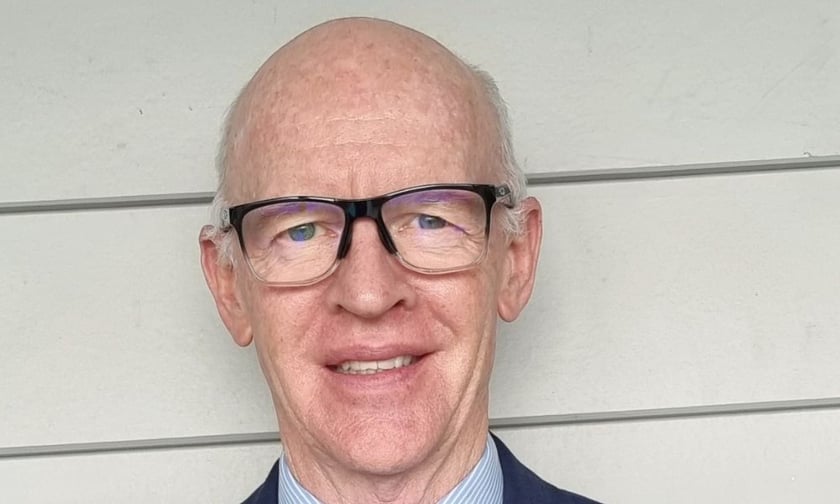

Fossil fuels are at the centre of Australia’s energy policy. The government’s Future Gas Strategy, announced in May, involves expanding that industry as part of the transition to cleaner energy. But how insurable are gas mining operations?
Much of the liquefied natural gas (LNG) exported by Australia comes from coal seam gas (CSG) mining. For example, Arrow Energy is building hundreds of new CSG wells in the Darling Downs region of southern Queensland.
Insurance broker Anthony Saunders (pictured above) suggested to Insurance Business that the viability of these mining projects needs to be looked at through a risk and insurance lens.
“The true measure is the potential liability that can be created by carrying on these coal seam gas mining operations: Can you cover the potential liabilities?” he said. “The answer is no, it's not coverable, not anywhere in the world.”
Saunders is an insurance broker and principal of Sydney-headquartered brokerage, Insurance Choice. His focus for much of the last two decades, he said, has been environmental security and providing risk management and insurance that covers environmental risks.
“Environmental insurance is about keeping in mind, what are the environmental externalities?” Saunders said.
“Lloyd’s do not provide cover for any liability caused as a result of any external, future potential pollution contamination caused by any form of mining, simply because they know that there is a liability and it's not measured,” he said.
In other words, insurers in the Lloyd’s market, he said, will cover a mining operation’s above-ground liabilities like mining machines, vehicles and buildings. They will not insure potential liabilities that arise from pollution or environmental damage.
However, these risks, he said, are environmental externalities that firms should take into consideration when they cost their operations.
“If you're not having to worry about or declare what those environmental externalities are, your balance sheet looks a whole lot better,” said Saunders.
Fossil fuel mining companies, he said, are not the only firms that don’t properly consider the liability of environmental externalities.
“I would say that 99.9% of organizations don't take that into consideration,” said Saunders. “We're in a commercial world and organisations are trying to balance off the best outcome for the profitability of the business without considering these issues.”
A CSG mining operation, he said, that risks causing very serious impacts from environmental externalities, is not obliged to build this into its business model.
These impacts can come well after the mining operation has moved on.
“If you’re a mining company and you dig a hole in the ground, your externalities can relate to the closure of that mine after you've finished doing what you're doing,” said Saunders.
CSG companies, he said, often need to dig numerous holes before they find a seam of gas that will generate good profits.
“But these other wells often aren’t appropriately closed off,” said Saunders. “Also, when you're digging two and a half miles down, or maybe even further into the ground to find coal seam gas, you're actually opening up those wells to contaminate the groundwater aquifers.”
He said the water from those aquifers may not surface or be accessible for a very long time.
“How certain are we that the contamination we're causing to the underground aquifers isn't going to put us in a situation in 100 years’ time when, in drought, and we need to access that water, it’s contaminated?” Saunders said.
He said if there was a condition in mining regulations that compelled these firms to have liability insurance in place, their operations would be unlikely to go ahead. Saunders said that just the costs of closing down a mine could be enough to make it unprofitable.
“The exercise to conduct the mining becomes unprofitable because the protection mechanisms you've got to put in place to ensure that the ground aquifer is not going to be contaminated are simply not possible,” he said.
There’s also the CSG mining process of hydro fracturing.
“That can leave massive amounts of contamination, including to topsoils, that no one's cleaning up afterwards,” said Saunders.
According to a research article by Deakin University’s Associate Professor Samantha Hepburn, hydro fracturing is the artificial stimulation of coal seams by injecting water, sand and chemicals into the seam.
The process, said the article, increases the flow of CSG gas but “can, however, radically deteriorate groundwater aquifers and is also the primary cause of chemical pollutants within associated water.”
In recent years, the issue of CSG mining’s threat to farmland and concerns around the possible lack of adequate public liability insurance have received increasing attention from industry stakeholders.
In 2020, Insurance Australia Group (IAG) decided to no longer offer liability protection in the policies of farmers with operational CSG or shale gas activities on their properties.
However, some farmers don’t think the industry response to this coverage issue is adequate.
Queensland farmers like Zena Ronnfeldt are concerned about possible links between CSG mining, soil subsidence and changes in soil moisture on her land.
According to the government’s Future Gas Strategy, “Natural gas is integral to the Australian economy.” The report said gas meets 27% of the country’s energy needs and represents 20% of export income. Australia supplies more than 40% of both Japan and Taiwan’s LNG and 10% of China’s.
What do you think of the environmental and insurance liability issues concerning mining for fossil fuels? Please tell us below
